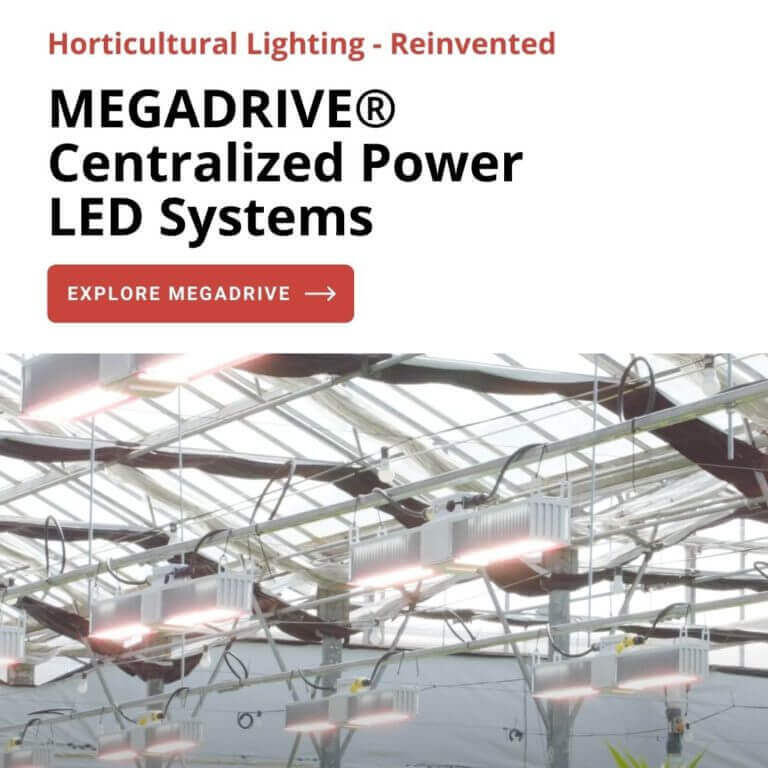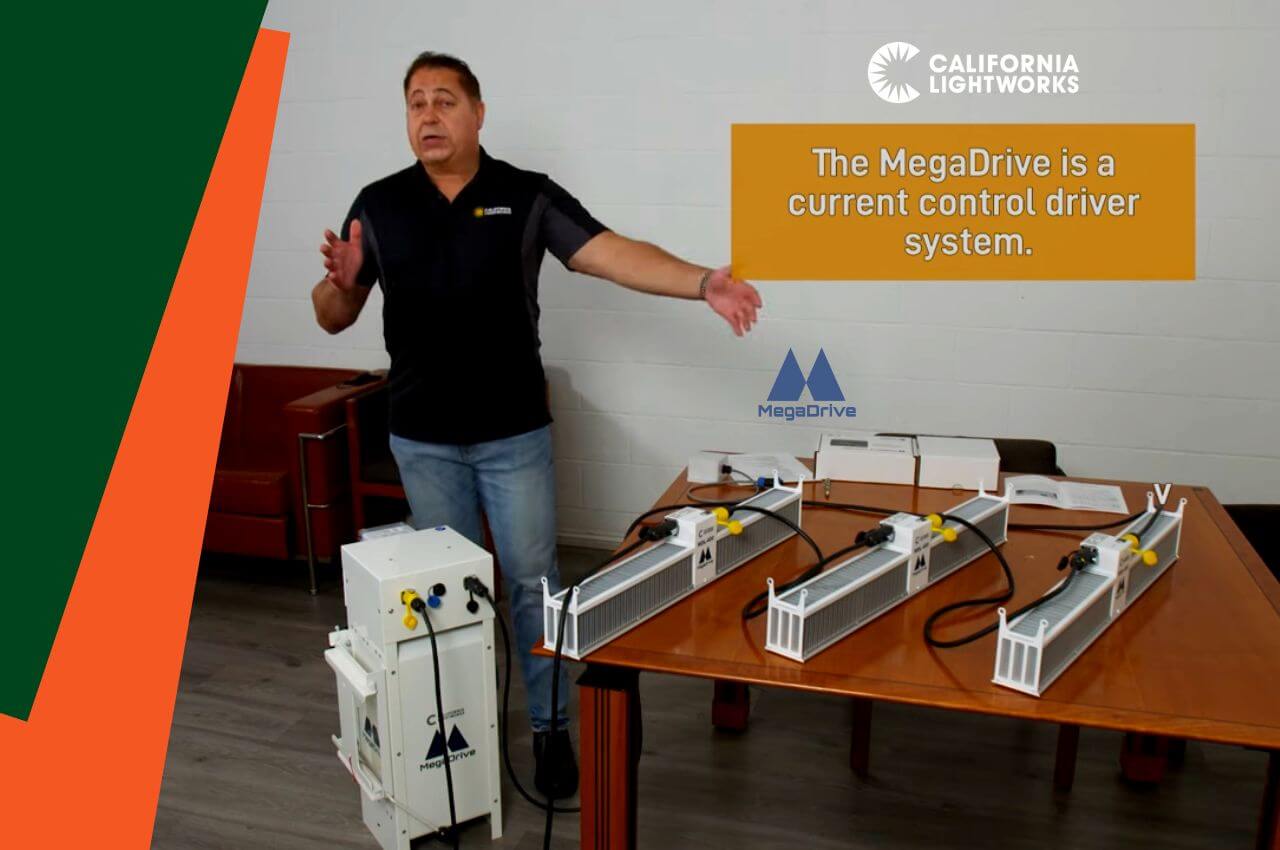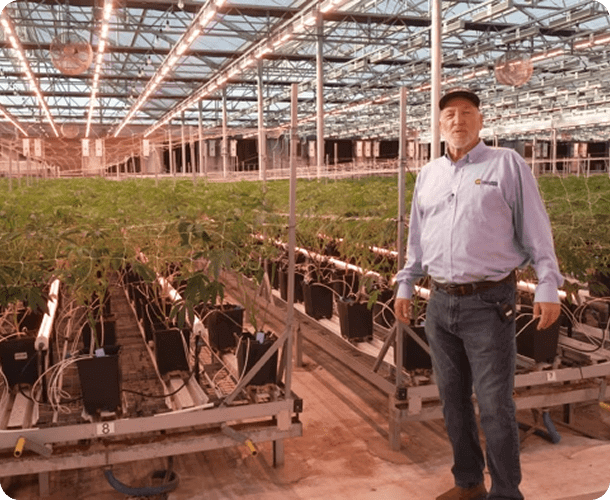Growing vegetables was once the luxury of people who had enough outdoor gardening space and lived in the proper climate. Over the years, however, grow light technology has improved, making indoor horticulture a possibility for gardeners everywhere. And the most exciting advancement in indoor growing has been the rapidly advancing technology of LED lighting.
LEDs are now more efficient, more affordable, and more nuanced than ever before. This technology is now accessible to professionals and hobbyists alike, and with the right growing techniques, LEDs have been proven to help gardeners of all levels cultivate their healthiest and most flavorful crops yet.
Whether you’re hoping to grow veggies indoors for the first time ever or you’re an experienced gardener thinking of making the switch to LEDs, we have some tips for using LED grow lights to cultivate a quality product. But first, let’s clarify why it’s so worth it to choose LEDs in the first place.
Benefits of Using LED Grow Lights for Vegetables?
Before LED lights became more commonly used in horticulture, indoor gardening typically required the use of HID bulbs . . . or, more specifically, MH (metal halide) lights for vegetation and HPS (high-pressure sodium) lights for flowering.
Now, the use of LEDs is on the rise for several reasons, not the least of which is the fact that LED lights provide full-spectrum lighting. This means that—unlike with HID lights—you don’t have to switch out your light source to ensure your plants get the right light spectrum at the right time for the best possible results.
Here are a few other reasons to use LEDs to grow your vegetables.
High Efficiency
Quality LED grow lights require much, much less energy than HID bulbs to do the same amount of work. And by “much, much less,” we mean somewhere around 50% less. This means major power bill savings for both serious growers and dabbling hobbyists.
Full Spectrum
As mentioned above, LED grow lights are full-spectrum lights. Let’s dig into that concept a bit more.
The sun is essentially a full-spectrum light. It radiates every color of the light spectrum, from UV to infrared. As a result, plants have evolved to make the most of that light spectrum, and they take a lot of cues from the way the intensity of each light spectrum changes with the shifting seasons. This is why you must switch between two different bulbs if you hope to use HID light effectively. MH lights favor the blue light spectrum, which is ideal for vegetation, and HPS lights favor the red spectrum, which promotes flowering.
LED lights, on the other hand, radiate the entire spectrum so your plants are sure to have whatever they need at every phase of growth. And with LED technology, you even have the option of variable spectrum LED lights. These grow lights allow you to actually change the intensity of each color spectrum to better control the growth and development of your crop. (More on that later.)
High Intensity with Low Heat Output
If you’ve ever tried to grow vegetables indoors using HID lights, you’re probably already familiar with the challenges of trying to provide the optimal temperature for healthy plant growth.
You see, MH and HPS lights are effective because they provide really intense light, which is what your veggies need to thrive. However, with great intensity comes great heat, which means if you’re growing in close quarters, you need to make some temperature adjustments to make sure your plants aren’t overheated. The ideal room temperature for most plants lands somewhere between 72 and 82 degrees.
When you use LED lights, however, you don’t have to worry so much about cooling the room. Your LED grow light will provide equivalent intensity with very little heat output, making it way easier—and cheaper—to keep the room temperature in balance.
Creating the Right Lighting Conditions for Your Crop
Now that you know the benefits of showering your plants with LED light, let’s cover some of the basics for making the most of this technology.
Understand the Lighting Needs of Your Specific Plants
Your initial lighting setup depends largely on two things:
- the type of plant you’re growing
- the specifications of your LED grow light
Consult your manufacturer for tips on hanging heights. (If you’re using LED grow lights from California Lightworks, you can find great setup tips here.)
As for the type of plant, you first want to find out if your vegetables are long-day plants or short-day plants. This tells you how much light they need every day. Most vegetables are long-day plants, especially at the seedling phase. Between growing powerful roots, flowering, and producing fruit, vegetables have a lot of work to do and require a lot of light to create the kind of energy they need to pull it all off. Typically, these plants need somewhere between 14 and 20 hours of light every day. And seedlings require the highest intensity of light.
There are exceptions, however. Leafy greens and shade-tolerant herbs prefer a little less light . . . that means lower intensity and shorter days.
Whatever it is you’re growing, be sure to do your research for the best possible results.
Choose Your Growing Space Carefully
Consistency is key when it comes to lighting your vegetables. Plants are like children: they’re happiest when they wake up and go to bed at the exact same time every day. So it’s not enough to set your LED grow light on a timer. You also need to be sure the space where your plants grow will be bathed in darkness during the night.
You see, night is when your vegetables metabolize all that energy they made from photosynthesis during the day. Even for long-day plants, those hours of darkness are essential for plant development and flowering. And just like people, plants are biologically designed to take their wake and sleep cues from the absence or presence of sunlight. An inconsistent “sleep” schedule throws off their biological processes and threatens to stunt their growth.
Don’t Crowd Your Plants
If you’re cultivating several plants in the same area, space them out in anticipation of their growth. Place them too close together and they wind up shading each other out with their leaves. While they’re unlikely to kill each other that way, you won’t get the results you should with LED grow lights.
Be Conscious of Where Your Vegetables are in the Growth Cycle
As your plants grow, their needs change. Most vegetables need high light intensity and the longest “days” when they’re seedlings. Once they develop a couple of true leaves, you can turn down the light intensity and shorten the duration by a couple of hours. Again, the ideal settings vary depending on your specific plant.
Another important factor to keep in mind is that you may need to adjust the height of your lights as your plants grow. While LED lights won’t scorch your plants due to heat, it is possible to cause light burn if the leaves come too close to the grow light. Again, consult your manufacturer about the ideal light placement.
Discover More Control with Variable Spectrum LEDs
Speaking of growth stages, let’s go over some quick tips for indoor gardeners who want to enjoy the full benefits of LED technology by using variable spectrum LED grow lights.
When you use variable spectrum LEDs, you have the power to adjust the spectrum throughout the growth cycle. This allows you to manipulate the pace of growth, promote more flowering, and influence the overall quality of your crop. The light spectrum is another topic you can research more as it regards your specific plant, but here’s a broad overview of the relationship between spectrum and vegetable growth:
Red light promotes growth and flowering. It pays to expose your plants to a little red light throughout their entire lifespan, but be aware that too much red promotes stretching, which can make your plants weak, long, and lanky. It’s good to have a larger balance of blue and white light until the flowering phase when you can crank the red light up.
Blue light is especially beneficial in the vegetative stage, as it promotes the growth of strong, stocky stems and keeps internodes nice and tight.
Again, the best light spectrum for your vegetables depends on the specific species you’re growing. Do a little research or feel free to reach out to us for more tips on how to cultivate your best vegetables ever with the help of LED grow lights.
And if you’re looking for a low-maintenance but highly effective LED light for your personal use, we recommend checking out the SolarXtreme series from California Lightworks. These lights are engineered with the most cutting edge LED technology but designed to be accessible for the casual gardener.





